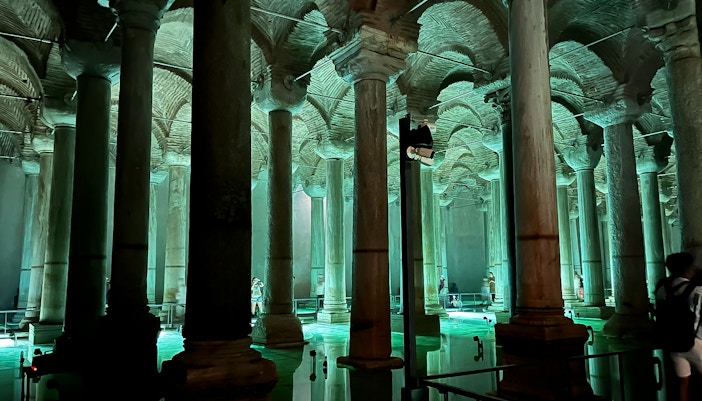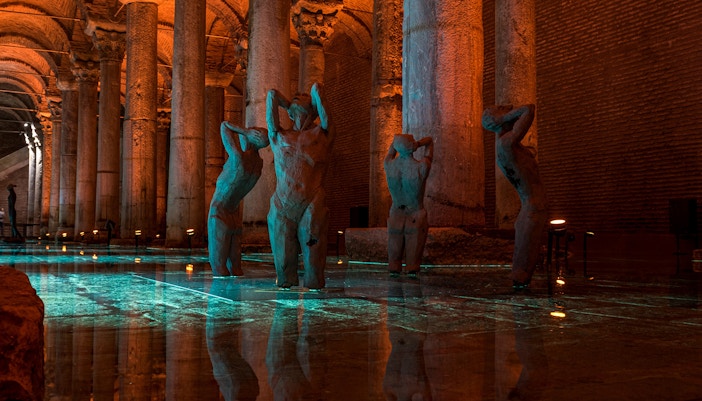The Basilica Cistern has two Medusa heads, one placed sideways and the other upside down. The structures have been repurposed from older relics and add an air of grandeur and mystery to the water palace.
The 6th-century Basilica Cistern in Istanbul was a monumental reservoir commissioned by Emperor Justinian I to supply water to the Great Palace of Constantinople. A masterpiece of Byzantine architecture, it showcases Istanbul’s rich and centuries-...
Also Known As
Yerebatan Sarnıcı, Sunken Palace, Subterranean Palace
Founded On
532
Founded By
Emperor Justinian

ADDRESS
Alemdar, Yerebatan Cd. 1/3, 34110 Fatih/İstanbul, Türkiye
RECOMMENDED DURATION
2 hours
Timings
09:00–22:00
VISITORS PER YEAR
2200000
TICKETS
From $39.71
EXPECTED WAIT TIME - STANDARD
30-60 mins (Peak), 0-30 mins (Off Peak)
EXPECTED WAIT TIME - SKIP THE LINE
0-30 mins (Peak), 0-30 mins (Off Peak)
The Basilica Cistern is named after the large public square called Stoa Basilica, which was located above it at the surface level.
According to historical accounts, it is believed that about 7,000 slaves worked on the construction of the Basilica Cistern.
The Basilica Cistern has withstood around 22 major earthquakes since it was constructed, proof of the exceptional skills of its Byzantine builders.
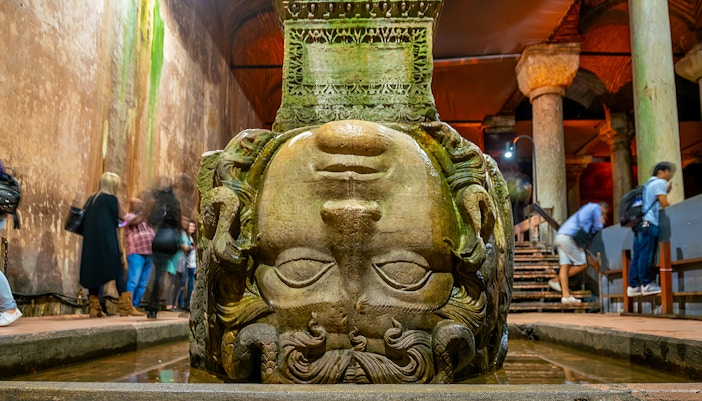
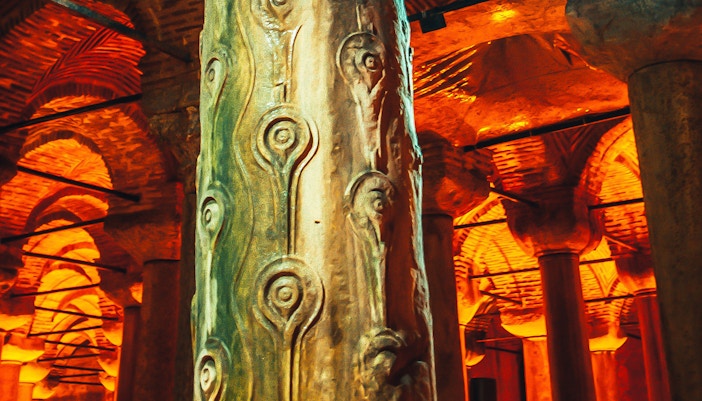
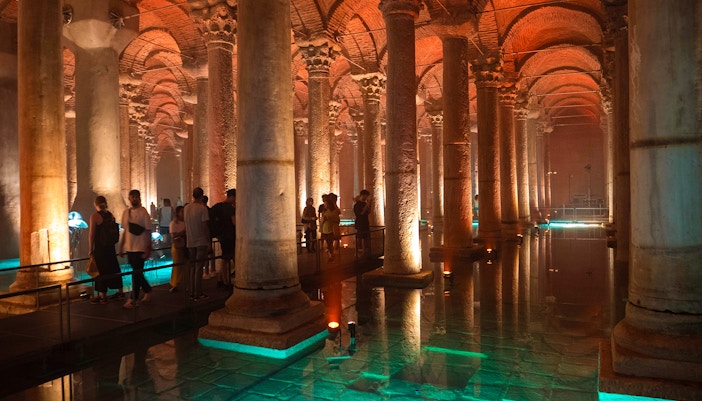
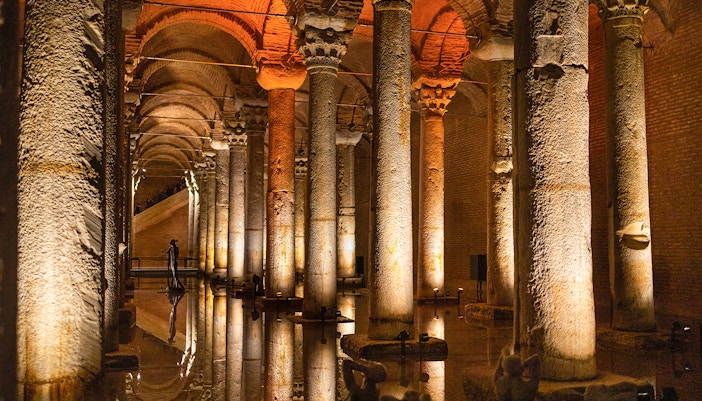
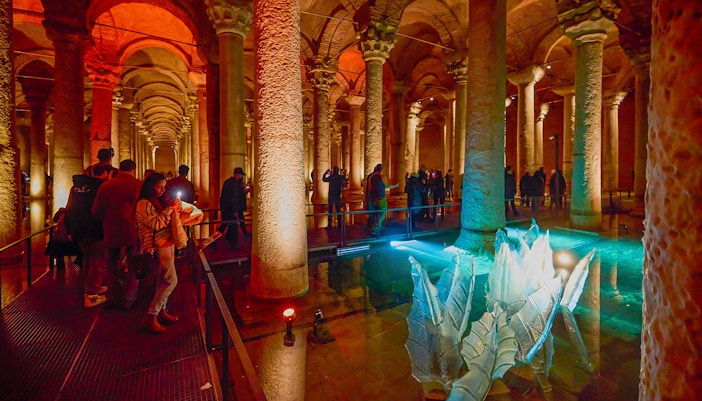


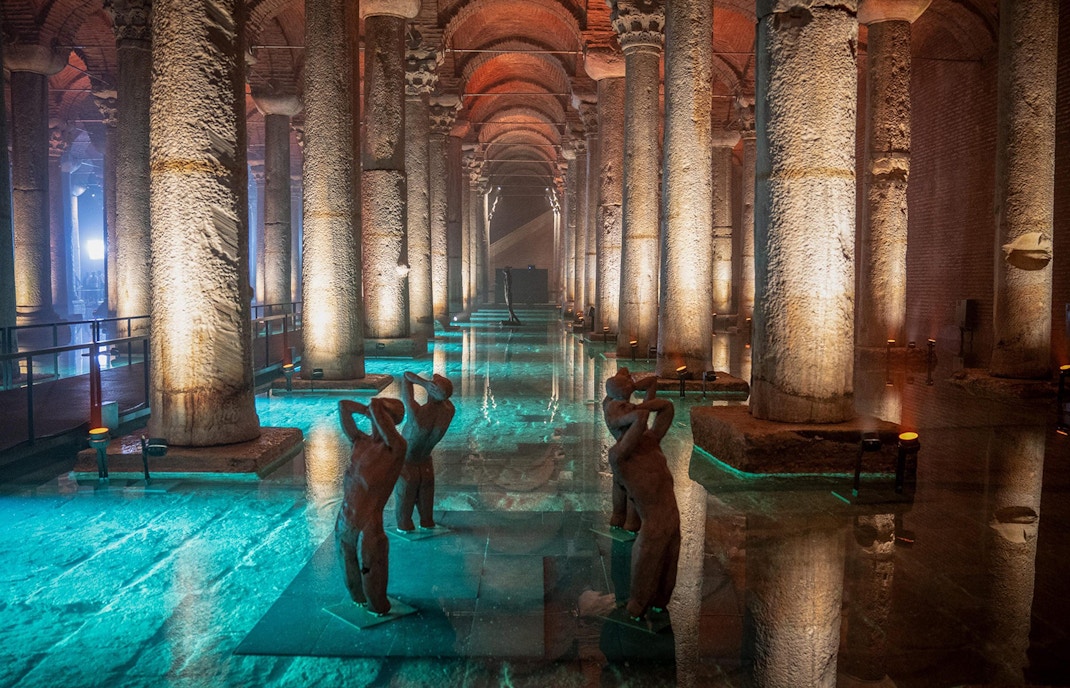
The cistern was commissioned by Emperor Justinian I in the 6th century AD to supply water to the Great Palace of Constantinople. It was built underground, beneath the city's surface, and involved skilled craftsmen, who used innovative techniques to complete its construction.
Today, the Basilica Cistern is one of Istanbul's most popular tourist attractions. Over the years, the cistern has undergone various renovations and restorations to ensure its continued preservation. Today, visitors can walk along a raised platform that leads them through the dimly lit space, allowing them to see the Medusa heads up close and appreciate the stunning visual experience that the Basilica Cistern offers.
Emperor Justinian I commissioned the Basilica Cistern in the 6th century to secure water for the palace. With its marble columns, pristine water surface, repurposed Roman columns, and iconic Medusa Heads, it draws visitors from around the world.
As you explore the Basilica Cistern, admire its roof supported by 336 marble columns, repurposed from ancient Rome. The Medusa Heads, one sideways and the other upside down, enhance the architectural beauty of the 'Sunken Water Palace.' Walk along the wooden pathways and enjoy the stunning reflections on the water's surface.
We recommend purchasing your Basilica Cistern tickets online in advance, as it is one of Istanbul’s most popular attractions and often crowded with visitors. Booking online also gives you access to exclusive deals and discounts.
The exact designer of the Basilica Cistern's floor plan is unknown. However, in the 6th century, several architects and craftsmen worked under Emperor Justinian I to construct the Cistern. While their names have not been recorded, their work resulted in an impressive underground water storage system.
Byzantine Emperor Justinian I commissioned the Basilica Cistern's construction in the 6th century, with work taking place between 532 and 542 AD. Approximately 7,000 slaves were involved in building this impressive water storage system.
The 336 marble columns, Medusa Heads, Weeping Column, and serene water surface are some of the most striking features inside the Basilica Cistern. Stroll along the wooden walkways to fully take in these remarkable sights.
The Hagia Sophia, Blue Mosque, and Galata Tower are among the top attractions in Sultanahmet Square. After exploring the Basilica Cistern, you can easily plan a day trip to visit these nearby landmarks.
To avoid large crowds, visit early in the morning or later in the afternoon, especially outside of peak tourist months (June to August). If you are visiting during the busy season, consider purchasing skip-the-line tickets to save time and avoid waiting.
The site is partially accessible, with a lift available near the exit on Alemdar Street. However, the walking path inside is uneven, and wheelchair users may need assistance, especially around corners.
Yes, the Basilica Cistern is a fascinating experience for children, with its impressive columns and mysterious Medusa heads, but be mindful of uneven surfaces and low lighting.
